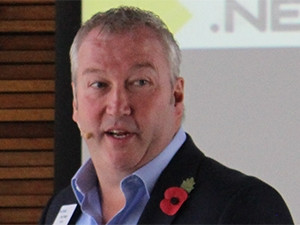
Data centre consolidation should become a priority for companies if they want to keep up with end-user demands on industries across the board.
This is according to Paul Phillips, regional director of Western Europe and Sub-Saharan Africa at Nutanix, speaking at the company's .NEXT On Tour in Johannesburg this week.
Consumers are driving the demand for companies to deliver applications better and faster, which they cannot do using legacy infrastructure, said Phillips.
He pointed out due to legacy infrastructure and the increased pressure IT professionals are under to deliver applications faster in their data centres and reduce costs, organisations need to adopt agile infrastructure.
In the IT-enabled world, infrastructure is the support that makes everything run, added Phillips.
He believes there will be growth in uptake as South African companies discover how hyper-convergence can remove complexity around lack of skills.
However, most organisations are hesitant to invest in new infrastructure - they are still using old infrastructure, where networking, servers and storage are all operated independently, said Phillips.
An Actual Tech report says hyper-converged infrastructure is still in its infancy. Those currently adopting it are a small percentage of the overall, and the outlook is that organisations will adopt such solutions over the next 24 to 36 months, it notes.
Many IT professionals have not fully grasped the concept of hyper-convergence and this is due to the fact that refresh cycles occur within functional silos in large enterprises, it adds. This keeps IT professionals focused on only what they know, as well as the existence of well-established processes for technology replacement.
IDC estimates the market for hyper-converged infrastructure is in a nascent state of development and penetration - and the opportunity for this market could be quite significant.
Phillips noted hyper-convergence removes complexity and drives agility to change or add functions on applications to meet end-users' demands, unlike legacy infrastructure.
Paul Ruinaard, regional sales manager for Sub-Saharan Africa at Nutanix, believes by using hyper-converged architecture, many of the challenges organisations face in regard to storage go away.
As more enterprises adopt hyper-converged solutions, they will be able to simplify and streamline IT capabilities, he added.
Simplifying the infrastructure is key - everything that becomes simple becomes easy to manage, said Phillips.
For organisations to remain competitive, they need to simplify the infrastructure, and for that to happen, they need to move away from the old legacy infrastructure to the new infrastructure of today, he explained.
In the fast-paced world we live in, end-users demand simple applications which can only be possible by integrating the data centre, added Phillips.
"We are seeing from the very large organisation to the small organisation the need for hyper-converged technology.
"If they want the advantages of the IT revolution happening around them, companies need to make the shift from siloed architecture to hyper-converged."
Share